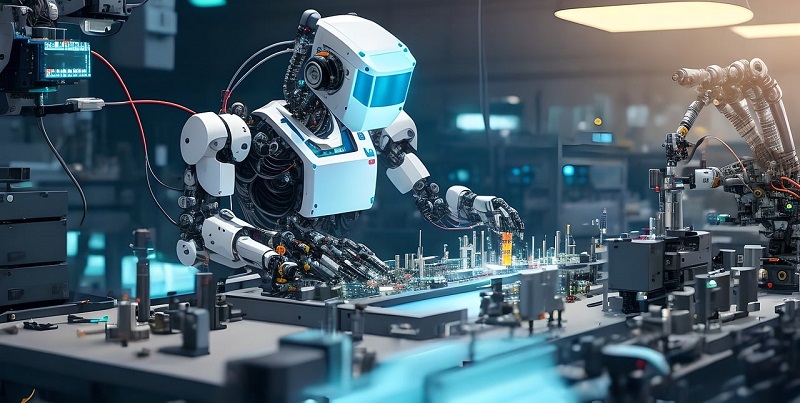The next generation of artificial intelligence (AI) is poised to redefine our perception of technology through the integration of robotics. This groundbreaking development aims to create AI-powered robots that can interact with the physical world, offering transformative solutions for various sectors and revolutionizing repetitive tasks. Let’s explore the potential and challenges of this AI-robotics revolution.
The Potential of AI-Powered Robots
Building AI-powered robots that can learn to navigate and interact with the physical world presents immense opportunities across diverse sectors. From logistics, transportation, and manufacturing to retail, agriculture, and healthcare, these AI robots have the potential to streamline operations, improve productivity, and enhance efficiency like never before. By automating repetitive tasks, human workers can shift their focus to more creative and complex endeavors.
Universally Applicable AI
The transformational aspect lies in creating a universally applicable AI solution, rather than developing niche AIs for specific use cases. This approach eliminates the need to reinvent the wheel for each application, saving time, resources, and effort. A universal AI can adapt and evolve to cater to different requirements and contexts, setting the stage for unprecedented advancements.
The Power of Diverse Data
The key to developing a generalized AI lies in accessing vast and diverse datasets. The success of models like the Generative Pre-trained Transformers (GPT) can be attributed to their exposure to high-quality datasets encompassing various tasks and user preferences. By harnessing wide-ranging data, AI systems can gain a deeper understanding of the physical world and make more informed decisions.
Robots Powered by Foundation Models
Robots powered by foundation models can comprehend their physical surroundings, analyze complex scenarios, and adapt their actions accordingly. This paradigm shift equips AI systems with the ability to tackle edge-case scenarios frequently encountered in unstructured real-world environments. Unlike models with narrower training, foundation models enable robots to respond effectively, even when faced with challenging circumstances.
Mastering Real-World Interactions
Teaching robots to learn from real-world physical interactions is an arduous task. It demands extensive high-quality data derived from actual experiences. By exposing robots to diverse environments and physical interactions, developers can train them to discern successful actions from failures. This process necessitates careful attention to detail, ensuring that robots learn to navigate and manipulate the physical world with precision and reliability.
Deep Reinforcement Learning (Deep RL)
Achieving success in robotics necessitates the incorporation of deep reinforcement learning (deep RL) techniques. By combining deep RL algorithms with well-trained foundational models, robots can acquire the necessary skills to operate autonomously and navigate complex physical environments. Deep RL helps robots learn from their experiences, refine their decision-making abilities, and adapt their actions to achieve optimal outcomes.
Human-Level Autonomy in the Physical World
While AI models developed in a manner similar to GPT have shown promising results, achieving human-level autonomy in the physical world poses a distinct scientific challenge. The dynamics of the physical realm add complexities that require innovative approaches, constant exploration, and refinement. Researchers and industry experts are tirelessly working to bridge this gap, pushing the boundaries of AI and robotics.
The integration of AI and robotics has paved the way for a revolutionary advancement that will shape the future of technology. By harnessing the potential of AI-powered robots, we can enable unprecedented efficiencies and transformation across sectors. The quest for a universally applicable AI, fueled by diverse datasets and powered by foundational models, holds immense promise. Overcoming challenges through deep reinforcement learning will bring us closer to achieving human-level autonomy in the physical world. The AI-robotics revolution promises to unlock unparalleled possibilities, forever changing how we interact with and benefit from technology.

